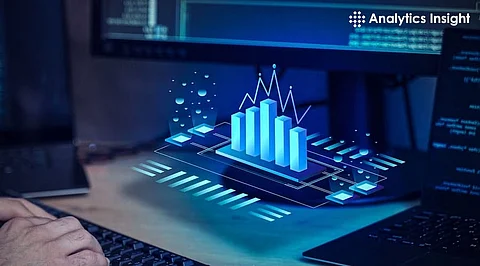

Data visualisation is the process of converting data into graphical or interactive representations that display patterns, trends, and insights. Data visualization can help data analysts, scientists, and engineers communicate their findings, explore their data, and make data-driven decisions. However, data visualization requires the use of programming languages that can handle large and complex data sets, create various types of charts and graphs, and support user interaction and customization.
Many programming languages can be used for data visualization, but some are more popular and widely used than others. In this article, we will look at five of the most essential programming languages for data visualization, and what makes them suitable for this task.
Python has emerged as a go-to programming language for data science and analytics, and its versatility extends seamlessly into the realm of data visualization. Libraries such as Matplotlib, Seaborn, and Plotly provide a rich set of tools for creating static and interactive visualizations. Matplotlib, in particular, offers a wide range of chart types, making it suitable for various data representation needs. Python's intuitive syntax and extensive community support make it an excellent choice for both beginners and seasoned developers.
R, a statistical programming language, has long been a favorite among statisticians and data scientists. Its powerful statistical packages, such as ggplot2, make it an ideal choice for creating intricate and aesthetically pleasing visualizations. The grammar of graphics implemented in ggplot2 allows users to articulate complex visualizations with concise code. R's ability to handle statistical computations seamlessly alongside visualization makes it a valuable asset in any data scientist's toolkit.
For web-based data visualizations, JavaScript is indispensable. Libraries like D3.js (Data-Driven Documents) have gained immense popularity for creating dynamic, interactive visualizations directly within web browsers. D3.js provides a low-level framework for manipulating the Document Object Model (DOM) and binding data to HTML, SVG, and CSS elements. The flexibility of D3.js allows developers to create custom visualizations tailored to specific project requirements. JavaScript, with its extensive ecosystem and compatibility with web technologies, is crucial for crafting engaging visualizations accessible through browsers.
Structured Query Language (SQL) may not be a traditional programming language for visualization, but its role is paramount when dealing with large datasets stored in databases. SQL enables efficient data retrieval, aggregation, and transformation, which are often precursors to visualization. Integrating SQL with visualization tools like Tableau or Power BI allows for seamless connectivity to databases, ensuring that visualizations are dynamically updated as underlying data changes. SQL's ability to process and manage data at scale makes it an essential language for anyone dealing with extensive datasets.
Julia is an up-coming programming language designed for high-performance scientific computing. With a syntax that is both expressive and familiar to users of other technical computing environments, Julia has gained traction in data science and visualization. Packages like Plots.jl provide a user-friendly interface for creating diverse visualizations. Julia's strength lies in its speed, making it particularly appealing for computationally intensive tasks, such as simulations or large-scale data processing.
While not a traditional programming language, Tableau is a powerful visual analytics tool that deserves mention in any discussion about data visualization. Tableau's strength lies in its user-friendly interface, allowing individuals with limited programming experience to create compelling visualizations through a drag-and-drop approach. Tableau integrates with various data sources and supports real-time data connections. Its ability to generate interactive dashboards and reports makes it an invaluable asset for professionals across different domains.
Java, a robust and versatile programming language, finds its place in enterprise-level data visualizations. Libraries such as JFreeChart and JavaFX provide developers with the tools to create sophisticated charts and graphs. Java's platform independence and scalability make it a suitable choice for applications requiring large-scale data visualization in corporate environments. With Java's wide adoption in the enterprise sector, it serves as a bridge between backend data processing and frontend visualization components.
Scala, a language that seamlessly blends functional and object-oriented programming paradigms, has gained popularity in big data processing frameworks like Apache Spark. With its concise syntax and compatibility with Java libraries, Scala is well-suited for handling large-scale datasets. Leveraging Spark and Scala, developers can process and analyze massive datasets before creating visualizations. This makes Scala an important language for those working on big data projects where visualizing immense datasets is a common requirement.
As data becomes increasingly complex, the demand for effective visualization grows. The choice of programming language depends on factors such as project requirements, the scale of data, and the desired level of interactivity. Python and R remain stalwarts in the realm of statistical analysis and visualization, while JavaScript and D3.js dominate the web-based visualization landscape.
Join our WhatsApp Channel to get the latest news, exclusives and videos on WhatsApp
_____________
Disclaimer: Analytics Insight does not provide financial advice or guidance. Also note that the cryptocurrencies mentioned/listed on the website could potentially be scams, i.e. designed to induce you to invest financial resources that may be lost forever and not be recoverable once investments are made. You are responsible for conducting your own research (DYOR) before making any investments. Read more here.
